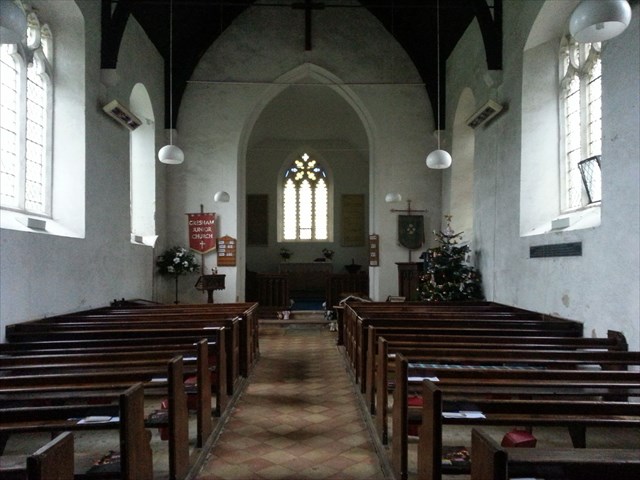All Saints is one of 124 round-tower churches in Norfolk.

The tower is circular on the inside and built with the west wall of the church at the same time. This evidence dates the tower before the Norman Conquest of 1066. This round tower is like other Saxon towers in Norfolk but lacks the detail of original doors and windows. The flints in the tower show some signs of being laid in layers. It is thought likely that no more than ten feet in height would have been built in a year, which would allow time for the mortar to set and would fit in with the seasonal work on the land. The tower had a new belfry opening in the 13th Century and then the top was altered. Drawings by Cotman in 1818 and Ladbrooke’s in 1824 show an unusual octagonal extension. This part was replaced by a battlemented parapet in 1887.

The church contains one of the East Anglian seven sacrament fonts and is the pride of the church. Two of the scenes represented on it are the baptism of Christ and an infant being immersed in an octagonal font. Other scenes show holy communion, penance, holy matrimony, ordination, and parishioners clustering around a neighbour's deathbed. The brass inscription in the floor near the font is dated 1505.
The organ was built in Norwich by Mark Noble in 1867 as a chamber organ and given to the church on 1st January 1893 by Mrs Spurgin a week after the death of her husband, the Rector, who died on Christmas day, 1892.
Two bells survive from the former ring of three. The larger one was founded in Norwich by William and Alice Brand in 1615, the smaller one in York by James Smith in 1665.
The church was built on a pagan site, and in 1910 the Prehistoric Society of East Anglia was shown an ancient polished axe which had been dug up in the churchyard and a chipped celt which had been built into the church tower. Walter Johnson, in Byways in British Archaeology, comments that "Its presence there was probably accidental, but it is well to recall the Breton practice of building stone axes into chimneys to ward off lightning".
In 1940, the executors of Joseph Cox of Gresham presented Norwich Castle Museum with a prehistoric handled beaker of the Bronze Age which had been found near Gresham.
Gresham was the site of a famous clerical battle in the 1940s. Although it was then seen as an Anglo-Catholic parish, the inside walls of the church are now bare and whitewashed, due to the efforts of the squire of the day, Colonel Batt, who was a determined Protestant, while his parish priest was an Anglo-Catholic. The Colonel demanded that all high church decorations be removed, the clergyman refused, and Batt took the matter to a consistory court and won. The case became famous, but it was one of the last of its kind.
For centuries, the church had its own rector, but it now shares a clergyman with neighbouring villages. It is still used for religious services, with Morning Prayer at 11 a.m. on the first and third Sundays of each month and Holy Communion at the same time on every second and fourth Sunday.
You are looking for a small vial hidden on the small triangular green outside the church. There is only enough room for a log so please bring your own pen. Tweezers may also be of help.